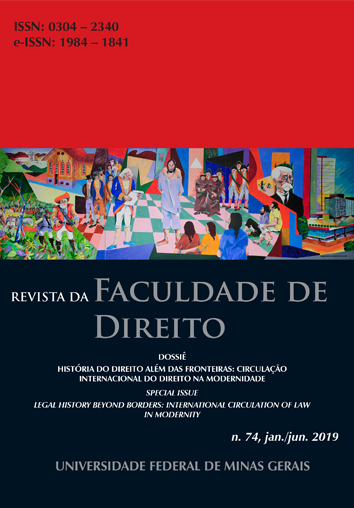THE CIRCULATION OF TRANSNATIONAL CRIMINAL LAW BETWEEN THE AMERICAS AND GERMANY (1848-1914) IN EXTRADITION TREATIES, JURIDICAL DISCOURSES AND INTERNATIONAL ASSOCIATIONS - DOI: 10.12818/P.0304-2340.2019v74p353
Abstract
The article observes the circulation of transnational criminal law in the period from 1848 to 1914 by analysing the extradition treaties concluded between states in Germany and the Americas. By looking at these countries separated by a vast distance, one can observe the expansion of the international circulation of criminal law and the variety of international actors between the European Revolutions of 1848 and the outbreak of World War I, which marked a pivotal time span for the formation of transnational criminal law. Specific attention is paid to the issues of ‘transnational crime’ and ‘political offences’ as well as to the question how the international circulation of criminal law shaped legal concepts and narratives of ‘international crime and security’. The analysis includes the juridical discourses, international conferences and organisations insofar as they dealt with extradition, transnational and political crime as well as formed a part of the international circulation of transnational criminal law. An important aim is to show that Latin American countries such as Argentina, Brazil, Paraguay and Uruguay participated in the international circulation of transnational criminal law through extradition treaties, multilateral conventions and national extradition laws, not to mention influenced the legal concepts of transnational political and international crime.
KEYWORDS: Transnational criminal law. Political crime. International crime. Extradition.




















